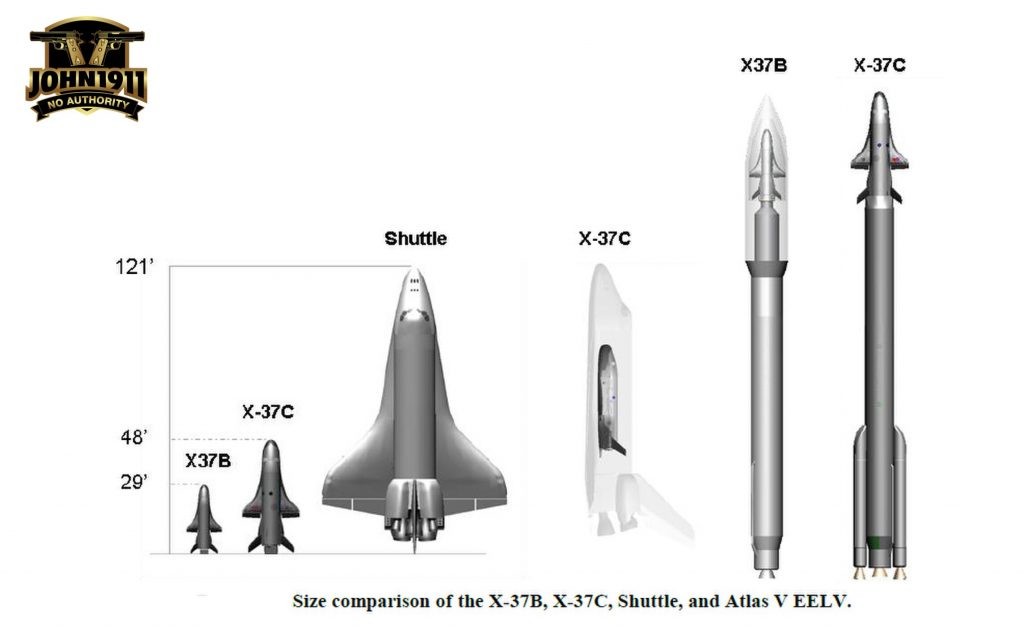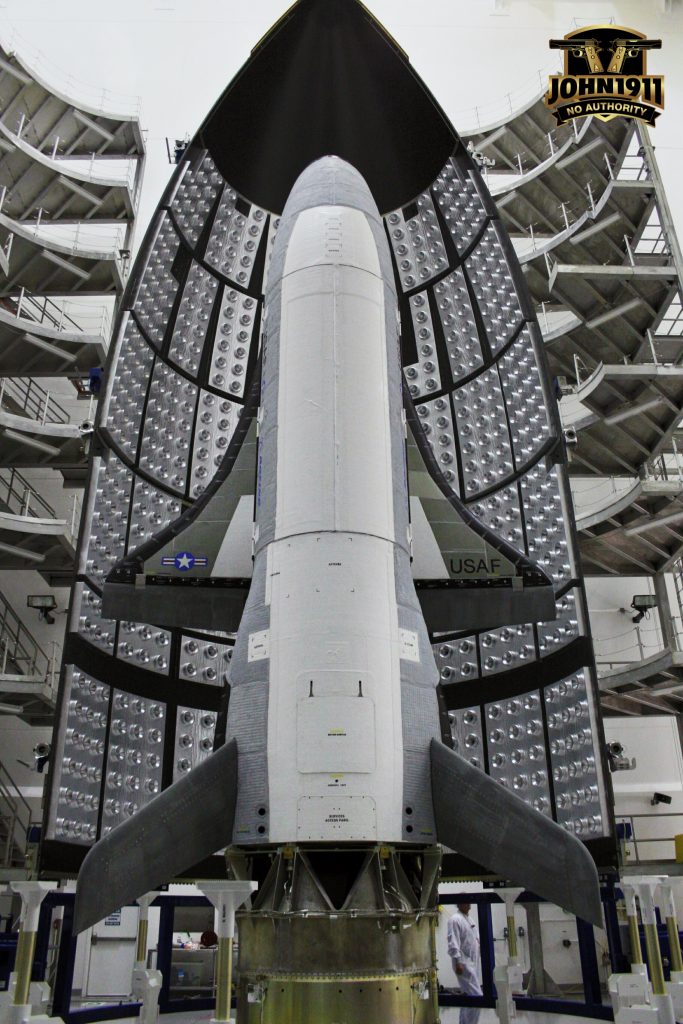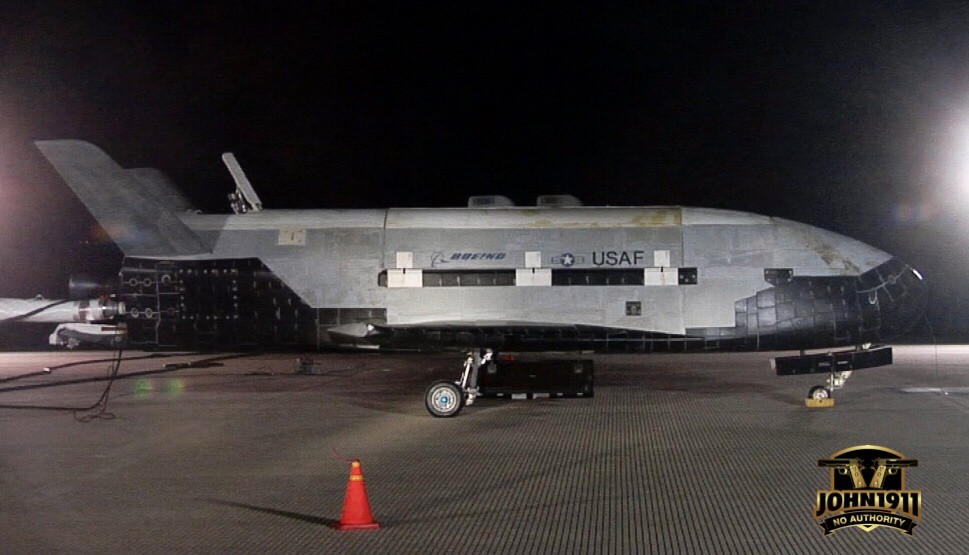Truthfully, no one still knows.
So here we have the X-37, which looks like a mini-shuttle a rich person might for her kids to play in. It seems to have about 1/8th of the volume size of the real Space Shuttle and rides to space on a rocket, encased in a protective fairing. Two could fit in the old Space Shuttle’s payload bay. It lands like a UAV. What does it do? No one seems to know what it does except the folks who work on it. NASA began the program in 1999; the Defense Advanced Projects Research Agency took it over in 2004. So almost 20-years later, how come no one knows?

According to the popular myth, the US is hopeless in keeping secrets. The truth is, US is very, very good at keeping secrets. Its principal tactic is to reveal 95% of the stuff that doesn’t need hiding, allowing it to tightly focus resources on what really needs to be hidden. To date, no one has come up with an authentic, fact-based explanation of the X-37’s purpose.

What we do know only adds to the confusion. The little guy was designed to orbit the earth for 270-days. The vehicles have completed only 4 flights, starting at 243-days for OTV-1, and getting longer: OTV-4 flew 717-days. Currently, OTV-5 is doodling along after a September 7, 2017 launch, and OTV-6 is scheduled for 2019. The US Air Force Secretary said in 2006 that the OTV program would focus on “risk reduction, experimentation, and operational concept development for reusable space vehicle technologies, in support of long term developmental space objectives.” That’s nice, but the Space Shuttle flew 133 successful missions, so you’d think we know a great deal about reusable and testing of Mach 25 reentry – another stated role of the X-37. Sometimes mentioned is Its use as a 6-passanger manned crew vehicle for the Space Station is mentioned. But with Boeing and Space-X both developed these vehicles, at best we can say some X-37 technology has been incorporated. As for testing autonomous navigation, that’s a clue that the little guy is designed for orbital operations. It is said to be testing the longevity of space components for future satellites. Since satellites routinely spend up to 15+-years and years in orbit (Keyhole photorecon satellites) we should have a fairly good idea already though; of course the X-37 brings back components; with regular satellites components are destroyed on reentry.

One possibility that makes sense is repair and refueling of key satellites, particularly the variable orbit military reconsats. Topping up the gas tank would extend the lives of these billion-dollar spies. Again, however, why the secrecy?

Another theory is that X-37 could return satellites to earth for repair and relaunch. The payload bay is about 7×7 feet, so some of the bigger boys would not fit. Payload by weight is rumored to be 3000-lbs, which rules out many satellites even if the form factor works. The theory that it can snatch enemy satellites for examination back home suffers from the form factor and weight issues. Plus as the National Interest notes, the X-37 is “relatively” easy to track, and our enemies might not be amused to learn their satellites are being hijacked. The payload limitations rule out space weapons such as the Kinetic Energy Penetrator, each of which according to the press would weight 10-20 tons.

One task seems feasible: photographing enemy satellites up-close and personal. But wont the enemy know something is up if X-37’s orbit shifts close to its satellite? Perhaps, however, with very sophisticated large aperture cameras, X-37 would not need to come within nudging distance.
Could X-37 be testing anti-satellite weapons? For example, might it be attaching mines to key enemy satellites? Or perhaps it is a test-bed for a space-based anti-satellite laser? There is no proof, however, of either of these propositions. Might it itself be a reconsat? Perhaps, but X-37 needs a heavy rocket to launch, so why not send these payloads directly into orbit? An emergency launcher, say in wartime, for a bunch of mini-comsats? Possible, but the same objection remains: why not launch the mini-comsats directly?

An intriguing suggestion is that X-37 is testing an Electro-Magnetic zero-propellent engine. ,It is true recent experiments appear to show part of the thrust is coming from earth’s magnetic field. If so, it wont help us to get to Mars, but it reduces much of the fuel satellites need to stay in orbit and would represent a big jump in the life of super-expensive multi-billion-dollar satellites such as Keyhole. The KH-11s are essentially Hubble space telescopes for examining the earth rather than the heavens. If equipped with EM engine drives and the occasional repairs, these satellites could stay up beyond 18-years which, as far as I know, is the maximum life of a KH-11. Again, however, why make the news of an EM drive top-secret? You can keep technical details classified to stay ahead of the several other nations working on the engine.
In many types of analysis, Occam’s Razor comes in handy. It is more complicated than my statement of it: “Use the simplest proof needed to explain the facts.” In this case, the simplest explanation for the X-37 is what the government says it is: an experimental vehicle. Though we still remain ignorant of what the experiments are.
Ravi Rikhye
“Shooting Guns & Having Fun”
- Ukraine Quick Update 6-20-22 - June 22, 2022
- Mariupol Order of Battle - May 2, 2022
- Ukraine update April 14, 2022 0900 US EDT - April 14, 2022




